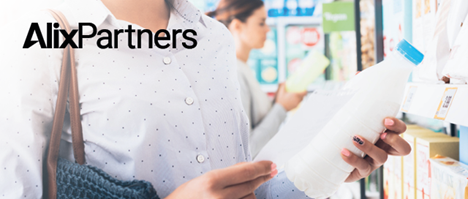食品和饮料 (F&B) 行业排放的温室气体约占全球排放量的三分之一,净零排放对食品和饮料行业而言势在必行。自2015 年《巴黎协定》以来,企业逐渐开始推进净零承诺,而随着 2021 年第 26 届联合国气候变化大会的举办,承诺数量激增。众多国际化企业在提高可持续发展和减少碳排放这两方面作出了雄心勃勃的承诺。 但是,随着时间的推移,为了实现《巴黎协定》中降低 1.5°C 的目标,企业需要做出巨大的转变,即从意图转为行动,进而到实现最终的结果。
Getting to net zero is an imperative for the food and beverage (F&B) industry, which is responsible for approximately one third of global greenhouse gas emissions. After a more gradual rise in commitments following the Paris Agreement in 2015, there has been a surge in pledges since COP26, or the 26th United Nations Climate Change conference, in 2021. Many global corporations have made ambitious commitments around becoming more sustainable and reducing carbon from across their businesses. But with time running out to meet the Paris Agreement target of 1.5°C reduction, a dramatic shift from intent to action – and ultimately outcomes – is needed.
艾睿铂咨询主导了行业内首创的专有研究,以了解整个食品与饮料行业价值链所需的协作水平。该研究囊括了北美、欧洲、中东和非洲地区 235 家最大型企业的碳承诺和财务指标。 基于我们的研究结果,并综合了联合国粮农组织衡量的食品与饮料排放量增长情况,我们认为食品与饮料行业难以按期实现《巴黎协定》中的目标。
AlixPartners has conducted proprietary, industry-first research to understand the level of collaboration needed across the F&B value chain, looking at carbon commitments and financial indicators of 235 of the largest companies in North America and EMEA. Based on our research and the growth of F&B emissions as measured by the Food & Agriculture Organization of the United Nations, we don’t believe the industry is on track to meet its Paris Agreement goals.
这项工作的缓慢进展既源于复杂的利益相关者环境,也源于缺乏标准的、有广泛认知并经过测试的解决方案。 虽然大多数公司都有改善其能直接控制的范围 1 和范围 2 排放的基准和计划,但最大的挑战集中在有效管理其供应链中的碳减排,即通常归类为上游范围 3的 碳排放。
The slow progress stems as much from the complex stakeholder environment as a lack of standards and well-understood and tested solutions. While most companies have baselines and plans in place to improve their directly controlled Scope 1 and 2 emissions, the biggest challenge centers around effectively managing carbon reduction in their supply chain, or what is typically categorized as upstream Scope 3 emissions.
这种复杂性意味着企业有必要制定一个务实的并且可以衡量的行动计划,以与供应商共同协作。 艾睿铂的碳排放估算模型可以有效的解决企业测量数据和制定计划过程中遇到的挑战——将更容易地衡量、对应结果、及最终实现供应商碳排放的降低。碳排放估算模型可以将碳排放的度量转化为在品类规划、采购及供应商管理等流程中每一个阶段的可操作的计划。这种方法可以帮助实现更快的业务决策,从而在整个供应商层面能动员、加速和扩大碳减排计划。
This complexity means it is necessary for companies to create a practical and measurable action plan that works in concert with suppliers. The AlixPartners Should-Carbon methodology cuts through the challenge of both measuring data and creating a plan – making it easier to measure, map, and ultimately reduce supplier carbon. The Should-Carbon methodology translates carbon measurement into actionable plans at each stage of category planning, procurement, and supplier management processes. This approach accelerates cross-business decision-making to mobilize, speed up, and scale carbon reduction initiatives with the organization’s supplier base.
碳排放估算模型可能带来透明度,并可以合作性地建立起一个碳减排路线图,将长期减排能力深入嵌入到过程中。 这需要通过三个广泛领域来完成:
Should-Carbon creates transparency and collaboratively builds a carbon-reduction roadmap that embeds long-term capability deep into the process. This is done through work in three broad areas:
指标:创建基线以支持决策和后续跟踪改进
Metrics: Create a baseline that supports decision-making and tracks improvement
- 确定标准并将其转化为可监控的业务指标和绩效指标
- 设定切合实际且可实现的细化目标
- 将排放量对应到足够的细度,以使内部团队和合作伙伴能有所作为
- 对于排放量高的供应商,重点关注更多的排放量对应细度,从而获得更好的效果
- 对各种碳排放改进方案的影响力和可行性进行建模分析,例如使用不同的配方成分或改变产品设计等
- Identify standards and translate these into business metrics and KPIs that can be monitored
- Set up goals that are granular while still being realistic and achievable
- Map emissions down to a level of detail that will help teams and partners make a difference
- Focus additional level of mapping detail on suppliers that are high emitters and therefore have a higher influence
- Model the impact and feasibility of carbon improvement options such as using different ingredients or changing product designs
能力:通过更多的培训和参与让团队建立长期能力
Capabilities: Educate and engage the team to build long-term capabilities
- 引入数据管理、分析和绩效报告能力
- 识别不同供应商的成熟度,并据此针对性的制定计划
- 建立持续的供应商碳指标管理工具及相应能力
- 将碳管理嵌入品类战略、供应商选择、谈判、承包方式和培训中
- 将碳管理嵌入供应商沟通、绩效、发展和激励框架
- 让团队能有该领域专家支持以得到专业方案,例如碳经济产品建模、再生农业和电气化等领域
- Bring in data management, analytics, and performance-reporting capabilities
- Recognize differing levels of supplier maturity and tailor plans to these
- Establish ongoing supplier carbon metrics management tools and capability
- Embed carbon management into category strategy, supplier selection, negotiation, and contracting methods and training
- Embed carbon management into supplier communications and performance, development, and incentive frameworks
- Provide access to subject matter experts for specialist solutions such as carbon economic product modeling, regenerative agriculture, and electrification
行动:制定行动路径图并建立问责制
Actions: Set up a roadmap and create systems of accountability
- 鼓励不同的职能部门在评估碳减排杠杆并决定如何进行实施时协同工作
- 团队成员在将决定转化为行动时应相互负责
- 团队需要做好准备应对潜的障碍和挑战,例如合规要求变化、供需问题或供应商无法履约
- 建立一个定期审查机制及健全的治理结构
- Encourage different functions to work together when evaluating carbon-reduction levers and deciding how these can be implemented into the business
- Teams should be accountable to each other as they translate these decisions into action
- Prepare teams to deal with potential roadblocks and challenges such as compliance changes, supply-demand issues, and supplier failure
- Set up regular reviews and a robust governance structure
碳减排之路充满挑战,涉及到详细的运营思维考量和对新工作方式的投入。 在 6 月 21 日都柏林举行的消费品论坛全球峰会上的特别演讲中,我们详细的介绍了我们的研究以及公司如何开始或加速实现减排目标。
点击此处,了解更多关于我们的碳排放估算模型,以及如何将可持续发展融入至您与供应商的关系中。
The road to decarbonization is challenging and involves detailed operational thinking and commitment to new ways of working.
Learn more about our research and how companies can get started on or accelerate their emission reductions goals at our special presentation at The Consumer Goods Forum Global Summit in Dublin on June 21.
Learn more about the Should-Carbon methodology and how to embed sustainability in your supplier relationships here.
